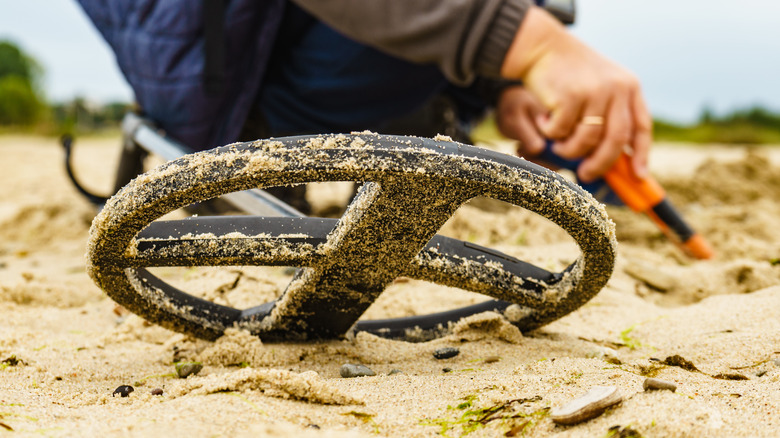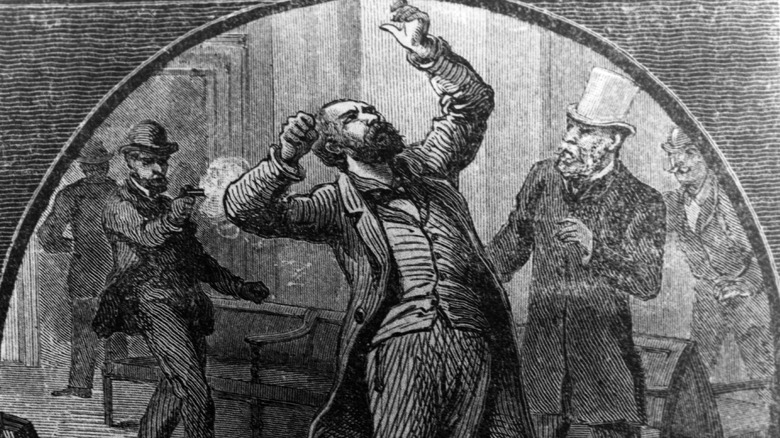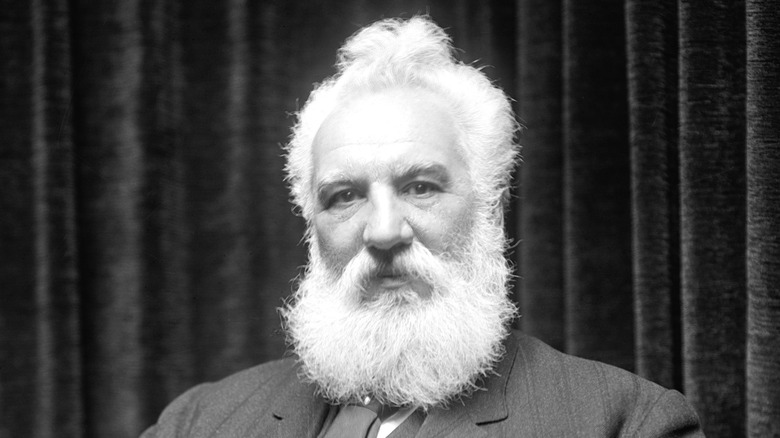How A Life-Threatening Event Led To The Invention Of The Metal Detector
Alexander Graham Bell is renowned for inventing the telephone and for his subsequent contributions to modern industrial/technological culture over the years (he even had a hand in developing the microphone, according to the University of Georgia). No doubt, some of his innovations regarding communication were influenced by his family background — his mother was nearly deaf, and his father taught elocution to the deaf, reports Britannica — and his own career path as an instructor in schools for the deaf. Without Bell, you very well could be reading this article on something other than your smart phone, because phones as a whole might not even exist. Take a minute to consider that world. In any case, what we know for certain was that Alexander Graham Bell was a devout innovator and craftsman whose ideas manifested themselves into some of the most pivotal and groundbreaking devices in human history. Bell's research was also instrumental in developing the metal detector, as The Vintage News reports.
It became a consequential endeavor for Bell after news of a near-fatal incident broke headlines across the country in 1881. According to History, an assassination attempt on President James Garfield's life on July 2 of that year left him with a .44 caliber bullet lodged in his lower back. It had just missed some vital arteries and organs and was resting right beside his pancreas. Efforts to locate and extract it from his body proved fruitless, so experts looked to a new emerging technology that Bell had some awareness of in order to assist them in trying to save the president's life.
The assassination attempt of president James Garfield
Upon arriving at the Baltimore and Potomac train station on July 2, 1881, President Garfield and his two sons stepped out of their coach to await transit to New England. His assailant, Charles Guiteau, waited patiently inside the station's lobby, and once the president and his party entered, Guiteau produced a pistol and fired two shots. One bullet only grazed a portion of Garfield's arm, but the other landed in his lower back. In Guiteau's pocket was a letter he had written, which stated, in part, "The president's tragic death was a sad necessity, but it will unite the Republican Party and save the Republic. Life is a fleeting dream, and it matters little when one goes." It was addressed to his would-be apprehenders after the task was carried out (via History).
Guiteau was promptly arrested and taken into police custody while the president was attended to by doctors who arrived on the scene shortly after. The wound itself was hardly fatal, but the doctors' unsterilized fingers probing for the bullet and the surgical instruments they failed to properly sanitize beforehand contaminated the wound and made the situation worse. For weeks after, President Garfield was bedridden. Unfortunately, his deteriorating condition started to look more and more hopeless as the days went by. Medical experts knew that Bell was savvy with emerging technology that might offer some assistance, so the next month, they reached out to him in desperation, as History reports.
New technology failed to save President Garfield's life
According to The Vintage News, Bell (above) had been working from research by a French inventor, Gustav Trouvé, who was developing a hand-held device that was designed to locate bullets in the bodies of those wounded by gunfire. When representatives of The White House told Bell that the president's life was hanging in the balance, his efforts to perfect the technology accelerated exponentially. Prior to that, Bell had performed certain experiments with his rudimentary metal detector that appeared promising, but the process of locating and extracting the bullet from President Garfield's lower back posed complications. His first attempt to locate the bullet happened when he arrived at The White House, beside the president's bed, in August of 1881. To his dismay, the device failed to perform properly and he couldn't find an explanation as to why.
Later on, he learned that metal springs located in the bed that President Garfield was lying upon confused the device and prevented it from finding the bullet. Sadly, by the time he made the realization, it was too late. History reports that President James Garfield died of infection from the wound and subsequent fevers on September 19, 1881 in New Jersey, where he had been moved; doctors hoped that fresh air from the ocean breeze would help to improve his condition. Despite the fact that augmented efforts to save the president's life failed, Graham Bell's experiments in relation to the crisis helped to perfect what would ultimately become the modern metal detector.


